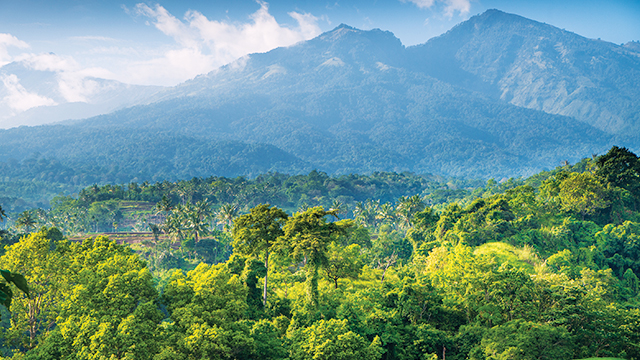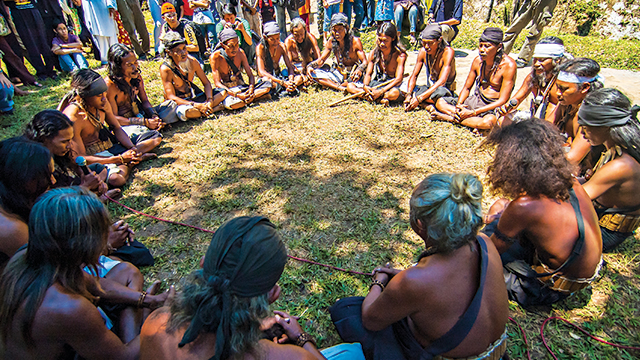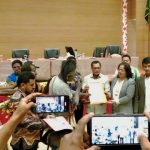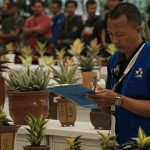Jakarta (Greeners) – Kalimantan Indigenous and Community Empowerment and Research Foundation (YPPMMA-KT) reveals local regulations over customary forests are yet to be passed. Simpun Sampurna, Chief of YPPMMA-KT, admits Central Kalimantan Government had form committees for indigenous peoples. Since last year, the local government has formed committees in all districts and cities in Central Kalimantan.
However, based on Law Number 23 of 2014 concerning the Regional Government, the community is only given the authority to work within the districts. Meanwhile, at the city level, it is the authority of the provincial committee.
“Up until today, there is no local government regulation (Perda) to complete this effort. We see this gap of regulation since the sixties,” Sampurna explains in a webinar “Indonesia Bicara: Klaim Hutan Adat,” “Indonesia Talks: Claim for Customary Forests” Thursday (17/09/2020).
Despite Law Number 50 of 1960 concerning Basic Agrarian Regulations that requires the making of Perda, the local regulation remains absence. As a result, problems related to indigenous peoples continue to develop.
Also read: AMAN : The New Capital City Will Create Social Impacts for Indigenous Groups
The Kinipan Conflict: Case of the Absence of Customary Forests Regulations
Sampurna mentions the Kinipan conflict as an example. In the Kinipan conflict, the lack of Perda leaving no space to accommodate the interest of indigenous peoples.
“We are facing a legal vacuum. Actually, this Kinipan problem will not be big if it (Perda) is implemented. Unfortunately, the local government is not running it,” Sampurna continues.
Adding to the topic, Forestry Law Expert, Sadino, said that customary forests are vulnerable to be the object of disputes. In Kinipan, he continues, many people claim forest ownership, but the object or customary forest is still in conflict.
“If there is still a dispute, there must be a solution to this tenurial conflict,” he argues.
Further, Sadino claims if the regulation recognizes the designated customary forest, indigenous peoples will continue to take care of them. Meanwhile, if the forest status is state forest, Sadino suggests the government to assist so indigenous peoples could be the forest handler.
“Also when the status is APL (Other Use Areas), it should benefit the indigenous peoples. The stipulation, format, and application would be different. As well as the problem of financing, and so on,” he said.
Also read: Less Lawmakers Supporting Indonesia’s Indigenous Peoples Bill
Determining the Subject, Object of the Customary Forest
Director-General of Social Forestry and Environmental Partnership, Ministry of Environment and Forestry (KLHK), Bambang Supriyanto, clarifies that customary forest can be in state forest as well as in APL.
According to Supriyanto, if indigenous peoples are in a state forest area, the customary law community must be determined through a regional regulation following the mandate of Law Number 41 of 1999 concerning Forestry.
“The customary law community is characterized by a leader, a law, a territory, and the members of the community. It is spelled out in Srada MK 12, outlined in the Minister of Environment and Forestry Regulation Number 31, now Number 21 of 2019, about recognizing customary forests,” he explains.
For forest areas included in APL, he continues, the legal basis used is the Minister of Home Affairs Regulation Number 52 of 2014 concerning Procedures for the Recognition of Customary Law Communities. KLHK is in charge of determining the areas.
In addition, Supriyanto suggests the public to elaborate between the object and subject of the dispute before submitting a proposal. He adds the subject in question is the customary law community, while the object is customary forest.
“The government determines the designated customary forest based on suggestions, for example, the suggestion from the local government. From there, then we verify whether any other party has right to said customary forest,” Supriyanto explains.
“We try to facilitate all parties. In addition to regulating the government, we also facilitate and mediates. We do this until all of the parties’ rights are obtained,” Supriyanto adds.
Writer: Ida Ayu Putu Wiena Vedasari
Editor: Ixora Devi




















































